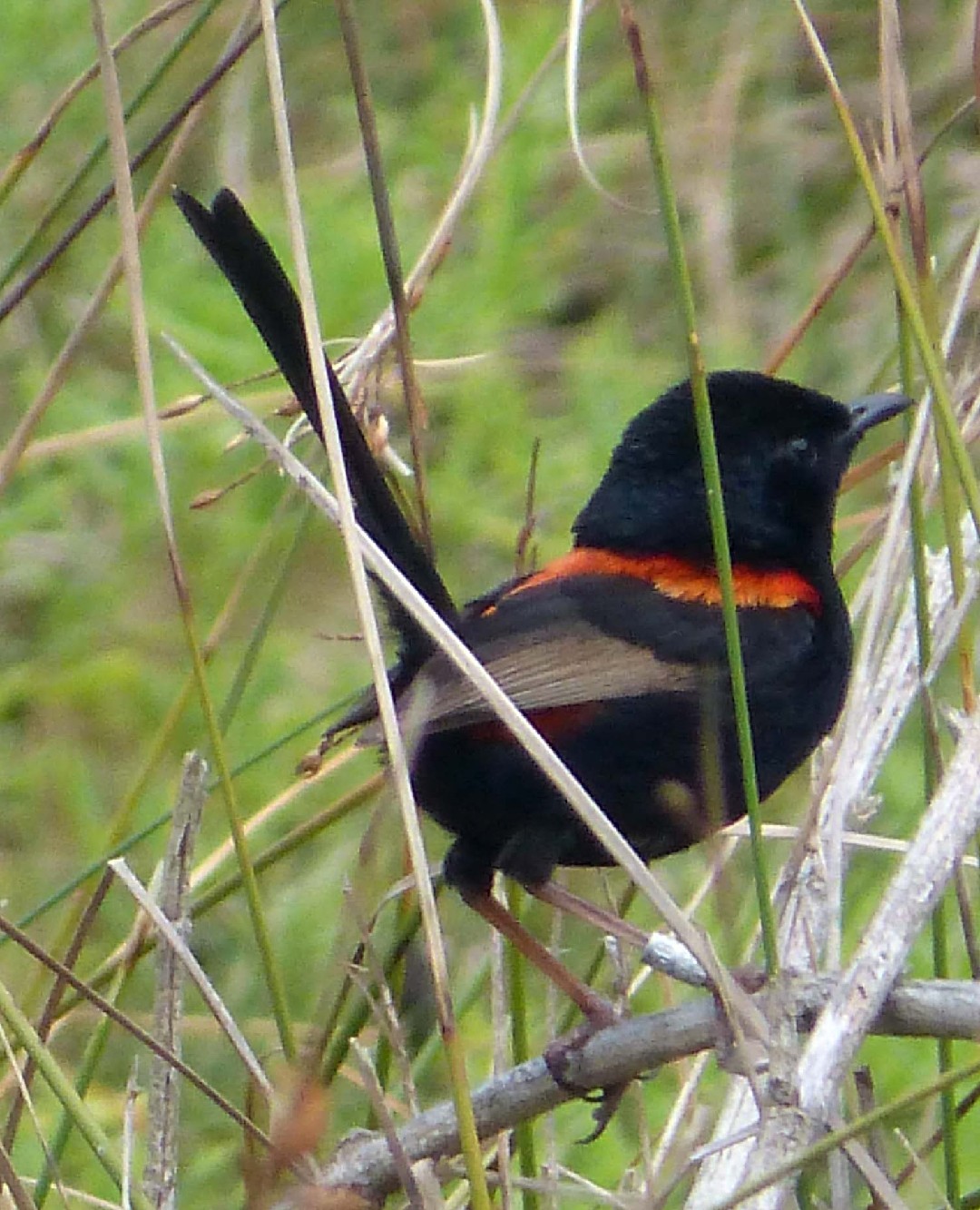Red-backed Fairywren
A species of Fairywrens Scientific name : Malurus melanocephalus Genus : Fairywrens
Red-backed Fairywren, A species of Fairywrens
Botanical name: Malurus melanocephalus
Genus: Fairywrens
Content
Description General Info
Description
The smallest member of the genus Malurus, the red-backed fairywren measures 11.5 cm (4 ⁄2 in) and weighs between 5–10 g (0.18–0.35 oz), averaging around 8 g (0.28 oz). The 6 cm (2 ⁄4 in) long tail is black in the breeding male, and brown in eclipse males, females and juvenile birds. Averaging 8.6 mm (0.3 in), the bill is relatively long, narrow, pointed and wider at the base. Wider than it is deep, the bill is similar in shape to those of other birds that feed by probing or picking insects off of their environs. Like other fairywrens, the red-backed fairywren is notable for its marked sexual dimorphism; the male adopts full breeding plumage by the fourth year, later than all other fairywrens apart from the closely related white-winged fairywren. The male in breeding plumage has a black head and body with striking red back and brown wings. At other times it has a brown upper body and white underparts. Some males, mainly younger, remain in eclipse plumage while breeding. The female looks remarkably similar with a buff brown body and a yellowish spot under the eye. The female of this species differs from those of other fairywren species in that it lacks a blue tint in the tail. Geographically, it follows Gloger's rule; female birds have whiter bellies and paler brown upperparts inland in sunnier climates. Juveniles of both sexes look very similar to females. 
Size
13 cm
Nest Placement
Shrub
Feeding Habits
Red-backed Fairywren primarily consumes a wide range of insects, like beetles, bugs, grasshoppers, and moths, including their larvae and eggs, as well as spiders. It forages in leaf litter and shrubbery, with minimal plant material in its diet. Feeding occurs mainly in mornings and late afternoons, with adults and helper birds feeding the young.
Habitat
Red-backed Fairywren primarily inhabits lush, grassy environments in tropical and subtropical areas where seasonal rainfall promotes thick ground cover. They favor habitats with tall grass species, revealing a preference for a mix of open grasslands and sporadic tree canopies. True to their nomadic nature, red-backed Fairywren move with vegetation cycles and retreat to fire-resistant territories when needed, avoiding truly arid landscapes.
Dite type
Insectivorous
General Info
Feeding Habits
Bird food type
Behavior
The red-backed fairywren is diurnal, and becomes active at dawn, and again in bursts throughout the day. When not foraging, birds often shelter together. They roost side-by-side in dense cover and engage in mutual preening. The usual form of locomotion is hopping, with both feet leaving the ground and landing simultaneously. However, a bird may run when performing the rodent-run display. Its balance is assisted by a relatively long tail, which is usually held upright and is rarely still. The short, rounded wings provide good initial lift and are useful for short flights, though not for extended jaunts. Birds generally fly in a series of undulations for a maximum of 20 or 30 m (66 or 98 ft). In dry tall grasslands in monsoonal areas, the change in vegetation may be so great due to either fires or wet season growth that birds may be more nomadic and change territories more often than other fairywrens. They form more stable territories elsewhere, such as in coastal areas. Cooperative breeding is less common with this species than with other fairywrens; helper birds have been sporadically reported, but the red-backed fairywren has been little studied. Both the male and female adult red-backed fairywren may utilise the rodent-run display to distract predators from nests with young birds. The head, neck and tail are lowered, the wings are held out and the feathers are fluffed as the bird runs rapidly and voices a continuous alarm call. 
Distribution Area
The red-backed fairywren is endemic to Australia and can be seen along rivers and the coast from Cape Keraudren in northern Western Australia through the Kimberleys, Arnhem Land and the Gulf Country and into Cape York, with the Selwyn Range and upper reaches of the Flinders River as a southern limit. It is also found on the nearby offshore islands Groote Eylandt, Sir Edmund Pellew, Fraser, Melville and Bathurst Islands. Its range extends all the way down the east coast east of the Great Dividing Range to the Hunter River in New South Wales, preferring wet, grassy tropical or sub-tropical areas, with tall grasses such as bladygrass (Imperata cylindrica), species of Sorghum, and Eulalia. It is not a true migrant, although it may be locally nomadic due to changes in vegetation, and may leave its territory after the breeding season. The species will retreat to fire-resistant cover at times of fire. The red-backed fairywren avoids arid habitats, and is replaced to the south of its range by the white-winged fairywren. 
Species Status
Not globally threatened.
Scientific Classification
Phylum
Chordates Class
Birds Order
Perching birds Family
Australasian wrens Genus
Fairywrens Species
Red-backed Fairywren 